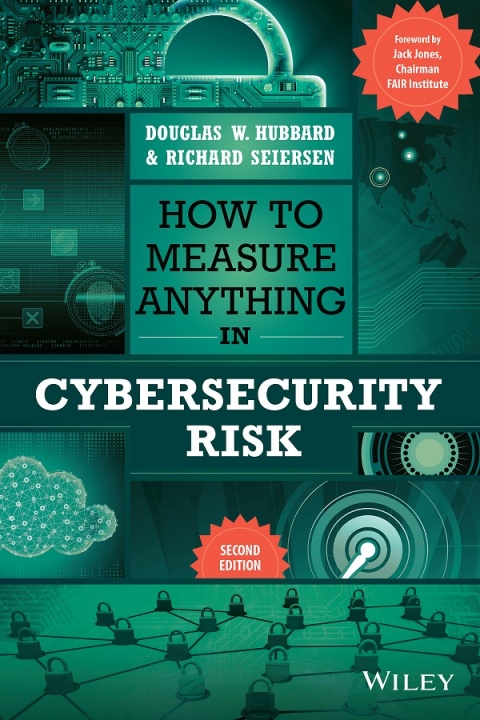Description
Efnisyfirlit
- Cover
- Title Page
- Copyright
- Dedication
- Foreword for the Second Edition
- Acknowledgments
- Preface
- Introduction
- Why We Chose This Topic
- What Is This Book About?
- We Need More Than Technology
- PART I: Why Cybersecurity Needs Better Measurements for Risk
- CHAPTER 1: The One Patch Most Needed in Cybersecurity
- Insurance: A Canary in the Coal Mine
- The Global Attack Surface
- The Cyber Threat Response
- A Proposal for Cybersecurity Risk Management
- Notes
- CHAPTER 2: A Measurement Primer for Cybersecurity
- The Concept of Measurement
- A Taxonomy of Measurement Scales
- The Object of Measurement
- The Methods of Measurement
- Notes
- CHAPTER 3: The Rapid Risk Audit
- The Setup and Terminology
- The Rapid Audit Steps
- Some Initial Sources of Data
- The Expert as the Instrument
- Supporting the Decision: Return on Controls
- Doing “Uncertainty Math”
- Visualizing Risk With a Loss Exceedance Curve
- Where to Go from Here
- Notes
- CHAPTER 4: The Single Most Important Measurement in Cybersecurity
- The Analysis Placebo: Why We Can’t Trust Opinion Alone
- How You Have More Data than You Think
- When Algorithms Beat Experts
- Tools for Improving the Human Component
- Summary and Next Steps
- Notes
- CHAPTER 5: Risk Matrices, Lie Factors, Misconceptions, and Other Obstacles to Measuring Risk
- Scanning the Landscape: A Survey of Cybersecurity Professionals
- What Color Is Your Risk? The Ubiquitous—and Risky—Risk Matrix
- Exsupero Ursus and Other Fallacies
- Communication and Consensus Objections
- Conclusion
- Notes
- PART II: Evolving the Model of Cybersecurity Risk
- CHAPTER 6: Decompose It
- Decomposing the Simple One‐for‐One Substitution Model
- More Decomposition Guidelines: Clear, Observable, Useful
- A Hard Decomposition: Reputation Damage
- Conclusion
- Notes
- CHAPTER 7: Calibrated Estimates
- Introduction to Subjective Probability
- Calibration Exercise
- More Hints for Controlling Overconfidence
- Conceptual Obstacles to Calibration
- The Effects of Calibration
- Beyond Initial Calibration Training: More Methods for Improving Subjective Judgment
- Notes
- Answers to Trivia Questions for Calibration Exercise
- CHAPTER 8: Reducing Uncertainty with Bayesian Methods
- A Brief Introduction to Bayes and Probability Theory
- An Example from Little Data: Does Multifactor Authentication Work?
- Other Ways Bayes Applies
- Notes
- CHAPTER 9: Some Powerful Methods Based on Bayes
- Computing Frequencies with (Very) Few Data Points: The Beta Distribution
- Decomposing Probabilities with Many Conditions
- Reducing Uncertainty Further and When to Do It
- More Advanced Modeling Considerations
- Wrapping Up Bayes
- Notes
- PART III: Cybersecurity Risk Management for the Enterprise
- CHAPTER 10: Toward Security Metrics Maturity
- Introduction: Operational Security Metrics Maturity Model
- Sparse Data Analytics
- Functional Security Metrics
- Functional Security Metrics Applied: BOOM!
- Wait‐Time Baselines
- Security Data Marts
- Prescriptive Analytics
- Notes
- CHAPTER 11: How Well Are My Security Investments Working Together?
- Security Metrics with the Modern Data Stack
- Modeling for Security Business Intelligence
- Addressing BI Concerns
- Just the Facts: What Is Dimensional Modeling, and Why Do I Need It?
- Dimensional Modeling Use Case: Advanced Data Stealing Threats
- Modeling People Processes
- Conclusion
- Notes
- CHAPTER 12: A Call to Action
- Establishing the CSRM Strategic Charter
- Organizational Roles and Responsibilities for CSRM
- Getting Audit to Audit
- What the Cybersecurity Ecosystem Must Do to Support You
- Integrating CSRM with the Rest of the Enterprise
- Can We Avoid the Big One?
- APPENDIX A: Selected Distributions
- Distribution Name: Triangular
- Distribution Name: Binary
- Distribution Name: Normal
- Distribution Name: Lognormal
- Distribution Name: Beta
- Distribution Name: Power Law
- APPENDIX B: Guest Contributors
- Appendix B Contents
- Decision Analysis to Support Ransomware Cybersecurity Risk Management
- Bayesian Networks: One Solution for Specific Challenges in Building ML Systems in Cybersecurity
- The Flaw of Averages in Cyber Security
- Password Hacking
- How Catastrophe Modeling Can Be Applied to Cyber Risk
- Index
- End User License Agreement






Reviews
There are no reviews yet.